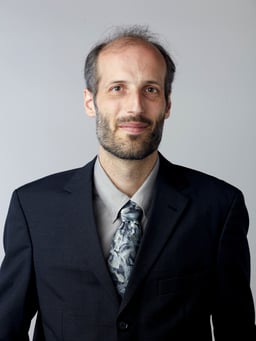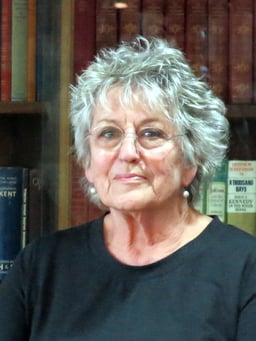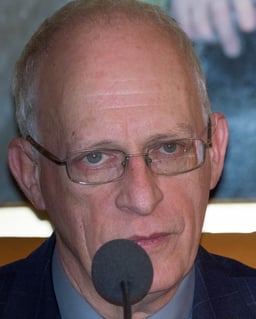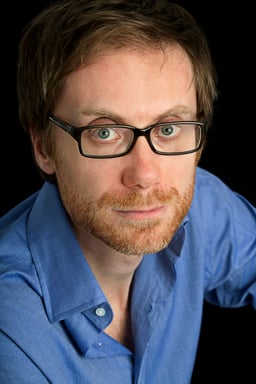University of Warwick

University of Warwick

| Motto | Latin: Mens agitat molem | |||||||||||
|---|---|---|---|---|---|---|---|---|---|---|---|---|
Motto in English | Mind moves matter | |||||||||||
| Type | Public research university | |||||||||||
| Established | 1965 | |||||||||||
| Endowment | £10.1 million(as of 31 July 2018)[2] | |||||||||||
| Budget | £631.5 million(2017-18)[2] | |||||||||||
| Chancellor | Catherine Ashton | |||||||||||
| Vice-Chancellor | Stuart Croft | |||||||||||
Academic staff | 2,492[3] | |||||||||||
Administrative staff | 4,033[3] | |||||||||||
| Students | 26,531[3] | |||||||||||
| Undergraduates | 15,553[3] | |||||||||||
| Postgraduates | 9,665[3] | |||||||||||
| Location | Coventry ,United Kingdom 52°22′48.29″N 1°33′42.95″W [113] | |||||||||||
| Campus | Green and self-sustainable (West Midlands/Warwickshire), 290 ha (720 acres) The Shard (WBS), London[4] | |||||||||||
| Newspaper | The Boar | |||||||||||
| Colours | Blue, white, purple | |||||||||||
| Affiliations | AACSB ACU AMBA EQUIS European University Association Guild of European Research-Intensive Universities Midlands Innovation Russell Group Universities UK | |||||||||||
| Website | warwick.ac.uk [114] | |||||||||||
 | ||||||||||||
| National rankings | ||||||||||||
| Complete (2020)[76] | 11 | |||||||||||
| Guardian (2020)[77] | 8 | |||||||||||
| Times / Sunday Times (2020)[78] | 10 | |||||||||||
| Global rankings | ||||||||||||
| ARWU (2018)[79] | 101-150 | |||||||||||
| CWTS Leiden (2019)[80] | 65 | |||||||||||
| QS (2020)[81] | 62 | |||||||||||
| THE (2020)[82] | 77 | |||||||||||
| British Government assessment | ||||||||||||
| Teaching Excellence Framework[83] | Silver | |||||||||||
The University of Warwick (/ˈwɒrɪk/) (abbreviated as Warw. in post-nominal letters[5]) is a public research university on the outskirts of Coventry between the West Midlands and Warwickshire, England.[6] It was founded in 1965 as part of a government initiative to expand higher education. Within the University, Warwick Business School was established in 1967, Warwick Law School was established in 1968, Warwick Manufacturing Group (now WMG) was established in 1980 and Warwick Medical School was opened in 2000. Warwick incorporated Coventry College of Education in 1979 and Horticulture Research International in 2004.
Warwick is primarily based on a 290 ha (720 acres) campus on the outskirts of Coventry, with a satellite campus in Wellesbourne and a central London base at the Shard. It is organised into three faculties—Arts, Science Engineering and Medicine, and Social Sciences—within which there are 32 departments. As of 2019, Warwick has around 26,531 full-time students and 2,492 academic and research staff.[3] It had a consolidated income of £631.5 million in 2017/18, of which £126.5 million was from research grants and contracts.[2] Warwick Arts Centre, a multi-venue arts complex in the university's main campus, is the largest venue of its kind in the UK outside London.
Warwick consistently ranks in the top ten of all major domestic rankings of British universities.[7] Warwick is ranked 7th in the UK for its research, according to the Research Excellence Framework (REF) 2014 by GPA.[8] Warwick is cited as amongst the world's most targeted university institutions by employers[9] and was the world's third best young university in 2015. Warwick has an average intake of 4,950 undergraduates out of 38,071 applicants (7.7 applicants per place).[10] In 2017, Warwick was named as the university with the joint second highest graduate employment rate of any UK university (along with St Andrews), with 97.7 per cent of its graduates in work or further study three and a half years after graduation.[11]
Warwick is a member of AACSB, the Association of Commonwealth Universities, the Association of MBAs, EQUIS, the European University Association, the Midlands Innovation group, the Russell Group and Universities UK. It is the only European member of the Center for Urban Science and Progress, a collaboration with New York University. The university has extensive commercial activities, including the University of Warwick Science Park and Warwick Manufacturing Group.
| Motto | Latin: Mens agitat molem | |||||||||||
|---|---|---|---|---|---|---|---|---|---|---|---|---|
Motto in English | Mind moves matter | |||||||||||
| Type | Public research university | |||||||||||
| Established | 1965 | |||||||||||
| Endowment | £10.1 million(as of 31 July 2018)[2] | |||||||||||
| Budget | £631.5 million(2017-18)[2] | |||||||||||
| Chancellor | Catherine Ashton | |||||||||||
| Vice-Chancellor | Stuart Croft | |||||||||||
Academic staff | 2,492[3] | |||||||||||
Administrative staff | 4,033[3] | |||||||||||
| Students | 26,531[3] | |||||||||||
| Undergraduates | 15,553[3] | |||||||||||
| Postgraduates | 9,665[3] | |||||||||||
| Location | Coventry ,United Kingdom 52°22′48.29″N 1°33′42.95″W [113] | |||||||||||
| Campus | Green and self-sustainable (West Midlands/Warwickshire), 290 ha (720 acres) The Shard (WBS), London[4] | |||||||||||
| Newspaper | The Boar | |||||||||||
| Colours | Blue, white, purple | |||||||||||
| Affiliations | AACSB ACU AMBA EQUIS European University Association Guild of European Research-Intensive Universities Midlands Innovation Russell Group Universities UK | |||||||||||
| Website | warwick.ac.uk [114] | |||||||||||
 | ||||||||||||
| National rankings | ||||||||||||
| Complete (2020)[76] | 11 | |||||||||||
| Guardian (2020)[77] | 8 | |||||||||||
| Times / Sunday Times (2020)[78] | 10 | |||||||||||
| Global rankings | ||||||||||||
| ARWU (2018)[79] | 101-150 | |||||||||||
| CWTS Leiden (2019)[80] | 65 | |||||||||||
| QS (2020)[81] | 62 | |||||||||||
| THE (2020)[82] | 77 | |||||||||||
| British Government assessment | ||||||||||||
| Teaching Excellence Framework[83] | Silver | |||||||||||
History
Twentieth century
The idea for a university in Warwickshire was first mooted shortly after World War II, although it was not founded for a further two decades. A partnership of the city and county councils ultimately provided the impetus for the university to be established on a 400-acre (1.6 km2) site jointly granted by the two authorities.[12] There was some discussion between local sponsors from both the city and county over whether it should be named after Coventry or Warwickshire.[12] The name "University of Warwick" was adopted, even though Warwick, the county town, lies some 8 miles (13 km) to its southwest and Coventry's city centre is only 3.5 miles (5.6 km) northeast of the campus.[13][14][15][16] The establishment of the University of Warwick was given approval by the government in 1961 and it received its Royal Charter of Incorporation in 1965. Since then, the university has incorporated the former Coventry College of Education in 1979 and has extended its land holdings by the continuing purchase of adjoining farm land. The university also benefited from a substantial donation from the family of Jack Martin, which enabled the construction of the Warwick Arts Centre.
The university initially admitted a small intake of graduate students in 1964 and took its first 450 undergraduates in October 1965. Since its establishment Warwick has expanded its grounds to 721 acres (2.9 km2), with many modern buildings and academic facilities, lakes, and woodlands. In the 1960s and 1970s, Warwick had a reputation as a politically radical institution.[17]
Under Vice-Chancellor Lord Butterworth, Warwick was the first UK university to adopt a business approach to higher education, develop close links with the business community and exploit the commercial value of its research. These tendencies were discussed by British historian and then-Warwick lecturer, E. P. Thompson, in his 1970 edited book Warwick University Ltd..[18]
Twenty-first century
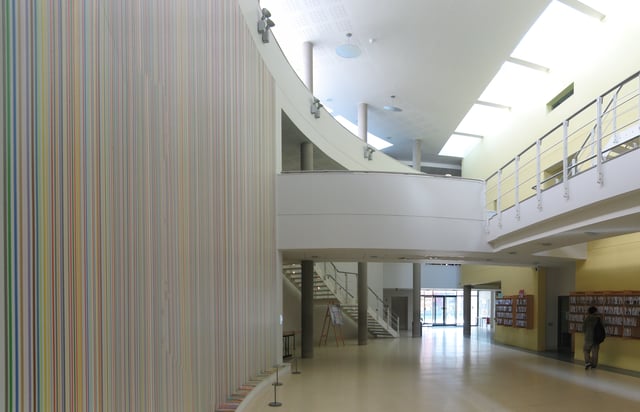
Ian Davenport's Everything (2004) in the Warwick Mathematics Institute.[24]
The university was seen as a favoured institution of the Labour government during the New Labour years (1997 to 2010).[19][20] It was academic partner for a number of flagship Government schemes including the National Academy for Gifted and Talented Youth and the NHS University (now defunct). Tony Blair described Warwick as "a beacon among British universities for its dynamism, quality and entrepreneurial zeal".[19] In a 2012 study by Virgin Media Business, Warwick was described as the most "digitally-savvy" UK university.[21]
The Leicester Warwick Medical School, a new medical school based jointly at Warwick and Leicester University, opened in September 2000.[22]
On the recommendation of Tony Blair, Bill Clinton chose Warwick as the venue for his last major foreign policy address as US President in December 2000. Sandy Berger, Clinton’s National Security Advisor, explaining the decision in a press briefing on 7 December 2000, said that: "Warwick is one of Britain's newest and finest research universities, singled out by Prime Minister Blair as a model both of academic excellence and independence from the government."[23]
In February 2001, IBM donated a new S/390 computer and software worth £2 million to Warwick, to form part of a "Grid" enabling users to remotely share computing power.[25] In April 2004 Warwick merged with the Wellesbourne and Kirton sites of Horticulture Research International.[26] In July 2004 Warwick was the location for an important agreement between the Labour Party and the trade unions on Labour policy and trade union law, which has subsequently become known as the "Warwick Agreement".[27]
In June 2006 the new University Hospital Coventry opened, including a 102,000 sq ft (9,500 m2) university clinical sciences building.[28] Warwick Medical School was granted independent degree-awarding status in 2007, and the School's partnership with the University of Leicester was dissolved in the same year.[29][30] In February 2010, Lord Bhattacharyya, director and founder of the WMG unit at Warwick, made a £1 million donation to the university to support science grants and awards.[31][32]
In February 2012 Warwick and Melbourne-based Monash University announced the formation of a strategic partnership, including the creation of 10 joint senior academic posts, new dual master's and joint doctoral degrees, and co-ordination of research programmes.[33] In March 2012 Warwick and Queen Mary, University of London announced the creation of a strategic partnership, including research collaboration, some joint teaching of English, history and computer science undergraduates, and the creation of eight joint post-doctoral research fellowships.[34][35]
In April 2012 it was announced that Warwick would be the only European university participating in the Center for Urban Science and Progress, an applied science research institute to be based in New York consisting of an international consortium of universities and technology companies led by New York University and NYU-Poly.[36] In August 2012, Warwick and five other Midlands-based research-intensive universities—Aston University, the University of Birmingham, the University of Leicester, Loughborough University and the University of Nottingham—formed the M5 Group, a regional bloc intended to maximise the member institutions' research income and enable closer collaboration.[37]
In July 2014, the government announced that Warwick would be the host for the £1 billion Advanced Propulsion Centre, a joint venture between the Automotive Council and industry. The ten-year programme intends to position the university and the UK as leaders in the field of research into the next generation of automotive technology.
Campus
Warwick is located on the outskirts of Coventry, 3.4 mi (5.5 km) southwest of the city centre (and not in the town of Warwick as its name suggests). The university's main site comprises three contiguous campuses, all within walking distance of each other. The university also owns a site in Wellesbourne, acquired in 2004 when it merged with Horticulture Research International.
Main campus

L to R: International Manufacturing Centre (IMC), Department of Computer Science (DCS), Zeeman Building (Maths and Statistics)
The main Warwick campus occupies 710 acres (2.88 km2) between the City of Coventry and the County of Warwickshire. The original buildings of the campus are in contemporary 1960s architecture. The campus contains all of the main student amenities, all but four of the student halls of residence, and the Students' Union.
Warwick Arts Centre
The Warwick Arts Centre is a multi-venue arts complex situated at the centre of Warwick's main campus. It attracts around 300,000 visitors a year to over 3,000 individual events spanning contemporary and classical music, drama, dance, comedy, films and visual art. The centre comprises six principal spaces: the Butterworth Hall, a 1,500-seat concert hall; a 550-seat theatre; a 180-seat theatre studio; a 220-seat cinema; the Mead Gallery, an art gallery; and the Music Centre, with practice rooms, and an ensemble rehearsal room where music societies and groups can rehearse. In addition the site includes the university bookshop, hospitality suites, a restaurant, cafe, shops, and two bars.
University House
In 2003 Warwick acquired the former headquarters of National Grid, which it converted into an administration building renamed University House. There is a student-run facility called the ‘Learning Grid’ in the building, which includes two floors of PC clusters, scanners, photocopiers, a reference library, interactive whiteboards and plasma screens for use by individuals and for group work.[42]
White Koan

The Koan in front of the Helen Martin Arts Studio
The White Koan is a modern art sculpture by Liliane Lijn which is installed outside the main entrance to the Warwick Arts Centre.[43][44] The Koan is 6 metres (20 ft) high,[43] white in colour, decorated with elliptical of fluorescent lights and is rotated by an electric motor whilst illuminated. It is intended to represent the Buddhist quest for questions without answers, the Kōan. The Koan was made in 1971 as part of the Peter Stuyvesant Foundation City Sculpture Project and was originally sited in Plymouth; it moved to the Hayward Gallery in London before being purchased by Warwick in 1972.[43] The Koan has temporarily been relocated to the university's Gibbet Hill campus during refurbishments to the Warwick Arts Centre; it will be returned upon completion of the project in 2020.[45]
Sports facilities
In April 2019 the university opened a new £49 million Sports and Wellness Hub, on the main campus,[46][47] featuring two sports halls with arena style balcony, the largest gym in the Higher education sector, a 12 lanes 25m pool with movable floor, climbing and bouldering walls, squash courts, studio spaces and a café.[48][49] The previous main sports centre was closed on 7 April 2019,[47] Elsewhere on campus is another sports hall, a £2.5 million 4-court indoor tennis centre with floodlit outdoor courts, a 400 m athletics track, multi-purpose outdoor surfaces, and over 60 acres of outdoor playing fields, including a football pitch and cricket grounds.
Warwick was an official training venue for the London 2012 Olympics. During the Games, some football matches were played at the nearby Ricoh Arena, home of Coventry City Football Club, and Warwick provided training and residential facilities for the Olympic teams.[50]
Other sites
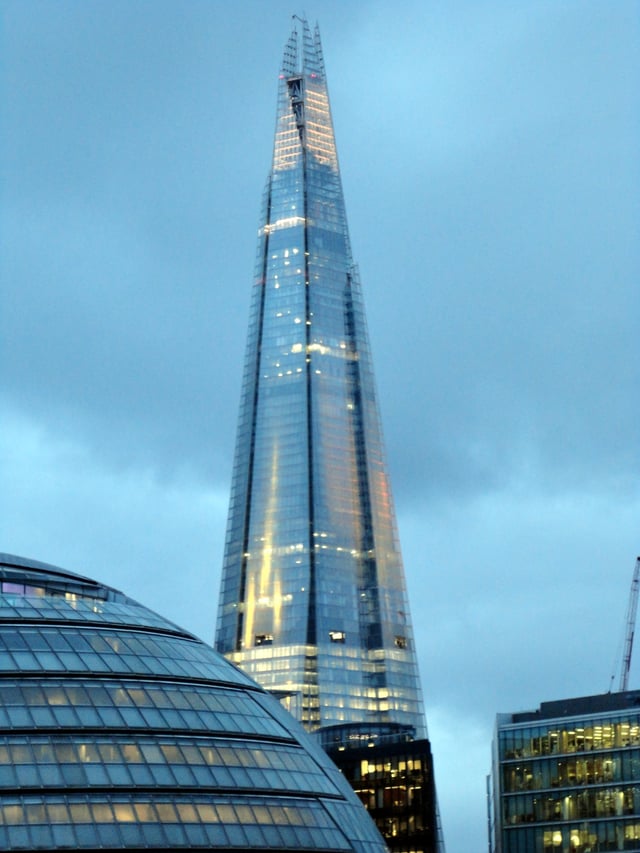
The Shard, where WBS houses its London campus
Other Warwick sites include:
The Gibbet Hill Campus, located contiguous to the main campus; home to the department of Life Sciences and the pre-clinical activities of Warwick Medical School.
The Westwood Campus, located contiguous to the main campus; home to the Centre for Professional Education, Centre for Lifelong Learning, the Arden House conference centre, an indoor tennis centre, a running track and some postgraduate facilities and student residences.
The University of Warwick Science Park.
University Hospital Coventry, in Walsgrave on Sowe area and home to the Clinical Sciences Building of the medical school.
Warwick Horticulture Research International Research & Conference Centre, located in Wellesbourne, Warwickshire.
The Shard skyscraper, in the city of London, houses Warwick Business School's metropolitan campus where the Executive MBA is taught.[51]
Planned developments
In November 2005, Warwick announced its vision for the year 2020 and outlined proposals for how it would like to develop its campus over the next 15 years.[52] The proposals built upon recent construction activity including a new Mathematics and Statistics Building, a new Computer Science Building, new Business School buildings, the Digital Laboratory, the new Heronbank Residences and an expanded Sports Centre. The proposals envisage a shift in the "centre of gravity" of the campus away from the Students' Union towards University House and a proposed "Academic Square" located around the new maths and computer science buildings.
Forthcoming projects include an inter-disciplinary biosciences research facility; a £25 million upgrade to Warwick Business School; and the National Automotive Innovation Campus, a new £150 million venture funded by Jaguar Land Rover and the UK government. The NAIC's purpose is to research and develop novel technologies to reduce dependency on fossil fuels and to reduce CO2 emissions. The new 30,000 sq ft (2,800 m2) campus will provide research opportunities for postgraduates from 2016 onwards. The campus has been dubbed a ‘brain trust’ and will be used to pioneer the green and high-tech sports and luxury cars of tomorrow, doubling the size of Jaguar’s research team.[53]
Later in 2017, the University released its 2030 vision which will see an exponential growth of its main campus in order to remain "world-class" and cope with the growing number of applications it receives each year, especially from non-UK students (41% of the student population).[54] This growth will include a new £33 million Faculty of Arts, a £55 million new sports centre (finished in April 2019), a new £54.3 million Interdisciplinary Biomedical Research Building(IBRB), a new type of student accommodation called "Cryfield village", the expansion of Warwick Manufacturing Group (WMG), a redevelopment for the Art centre and a new Library (scheduled in 5 years time).[55] For this occasion, Stuart Croft, vice chancellor of the university declared "New buildings are and will continue to be a part of our everyday existence. We need to open one new academic building a year from now until at least 2023. In order to do this and to keep Warwick as one of the world’s leading universities, we need to do this together, involving the whole community."[56][57][58]
Organisation and administration
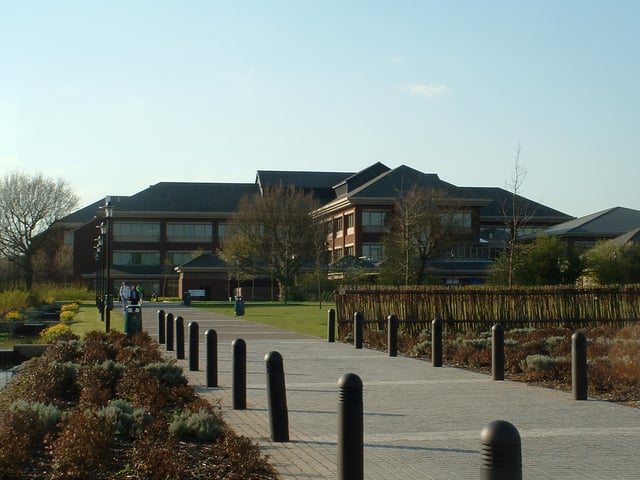
University House
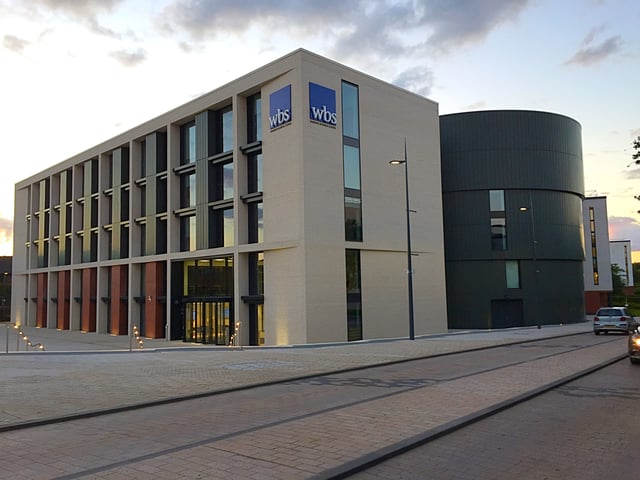
Warwick Business School
Warwick is governed by three formal bodies: the Court, Council and the Senate. In addition to these, a steering committee provide strategic leadership in between meetings of the formal bodies. Faculties are overseen by Faculty Boards which report to the Senate.[59] The Principal Officers of the university have responsibility for day-to-day operations of the University.[60]
Faculties and departments
Warwick's academic activities are organised into the following faculties and departments:[61]
| Faculty of Arts | Faculty of Science, Engineering, and Medicine | Faculty of Social Sciences |
|---|---|---|
|
|
|
Finances
In the financial year ended 31 July 2018, Warwick had a total income, including share of joint ventures, of £631.5 million (2014/15: £459.6 million)[2] Key sources of income included £316.6 million from academic fees and support grants (2014/15: £190.0 million), £126.5 million from research grants and contracts (2014/15: £83.7 million), £123.0 million from operating incomes (2014/15: £77.4 million)[2] At year-end Warwick had endowment assets of £10.1 million (2014/15: £8.1 million)[62]
Coat of arms
Warwick's coat of arms depicts atoms of two isotopes of lithium, a DNA helix to represent science and also the Bear and Ragged Staff, historically associated with Warwickshire (and previously the Earls of Warwick) and the Elephant and Castle of Coventry. The bear is not chained in the current depiction of the university's coat of arms, although it had been in its original grant of Letters Patent by the College of Arms.[63]
Crest
On a Wreath of the Colours, the Mantling Gules, doubled Or, an Open Book bound and clasped Argent, the pages Or, inscribed thereon in Roman Capitals Sable MENS AGITAT MOLEM, and resting on a book fesswise Argent, the fore edge to the front Or. Note: The Elephant and Castle in the first quarter is for Coventry and the Bear and Ragged Staff in the fourth for Warwickshire.[64]
Academics
In October 2018, Warwick had 26,531 students, with around two-fifths being postgraduates.[3] About 43% of the student body comes from outside the UK[3] and over 120 countries are represented on the campus. The university has 29 academic departments and over 40 research centres and institutes, in three faculties: Arts, Science Technology Engineering and Maths(STEM), and Social Sciences. There were 2,492 academic and research staff in October 2018.[3]
Admissions
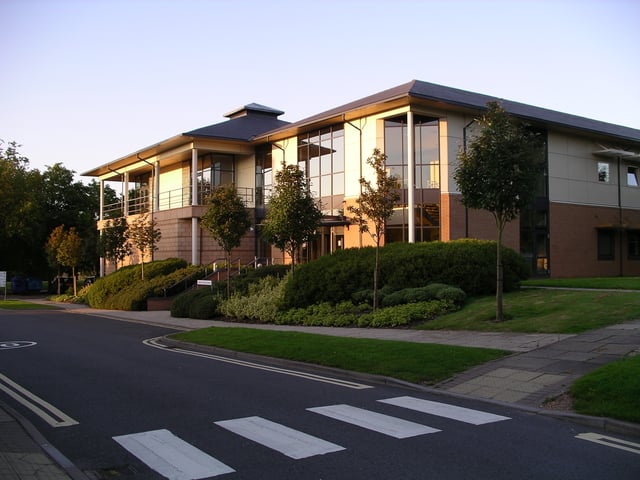
Warwick Medical School
A Freedom of Information request in 2015 revealed that the university received 25,071 undergraduate applications and made 18,380 offers in 2014-15. This yielded an acceptance rate of 15.8% %. Particular competitive courses include Law, Economics and courses within the Warwick Business School which yielded offer rates of 53.8%, 57.2% and 58.9% respectively.[69]
Warwick students also average top A-Level grades with new entrants in 2015 amassing an average of 478 UCAS points, the equivalent of AAAaa at A-level—the 13th highest in the country.[70] In 2015, the university gave offers of admission to 84.3% of its applicants, the 6th highest amongst the Russell Group.[71] For 2017 entry, the university was one of only a few mainstream universities (along with Cambridge, Imperial College, LSE, Oxford, St Andrews, and UCL) to have no courses available in Clearing.[72]
International partnerships
Library
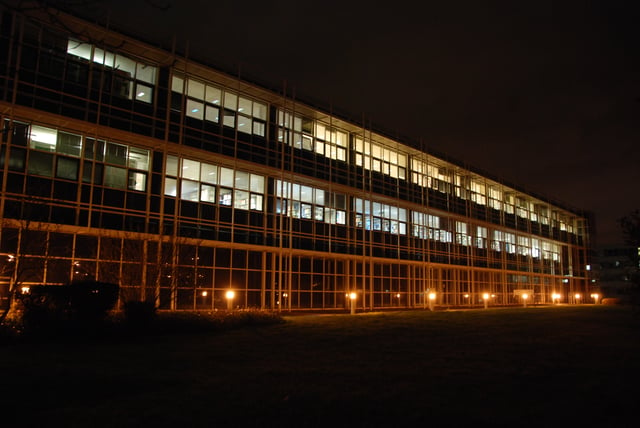
The Modern Records Centre at night
The main university library is located in the middle of the main campus. It houses approximately 1,265,000 books[75] and over 13 km of archives and manuscripts. The main library houses services to support Research and Teaching practice and collaboration between departments. The Wolfson Research Exchange opened in October 2008 and provides collaboration spaces (both physical and virtual), seminar rooms, conference facilities and study areas for Postgraduate Research students. The Teaching Grid, which opened in 2008, is a flexible space which allows teaching staff to try out new technologies and techniques. Adjacent to the main library building is the Modern Records Centre, a sizeable archive collection, including the UK's largest industrial relations collection.
Awards
In 2008 the university launched a new prize, the Warwick Prize for Writing, worth £50,000. It is defined as "an international cross-disciplinary award which will be given biennially for an excellent and substantial piece of writing in the English language, in any genre or form, on a theme that will change with every award". The inaugural winner of the award was Naomi Klein for her critically acclaimed book Shock Doctrine.
Rankings and reputation
Warwick is ranked 54th in the 2019 QS World University Rankings, 65th in the CWTS Leiden ranking, 101-150 by Academic Ranking of World Universities and 79th= in the Times Higher Education World University Rankings. In 2019, it ranked 172nd among the universities around the world by SCImago Institutions Rankings.[84]
Warwick ranked 4th in Europe in the Times Higher Education (THE) European Teaching Rankings 2018, being beaten only by Oxbridge and the Sorbonne.
In 2017, Warwick was named as the university with the joint second highest graduate employment rate of any UK university (along with St Andrews), with 97.7 per cent of its graduates in work or further study three and a half years after graduation.[11]
In subject rankings, The Complete University Guide ranked Warwick's Economics department 3rd overall in its rankings for 2019.[87] Warwick PAIS department (Politics and International Studies) was ranked as first in the UK by the Good University Guide.[88] Overall, 19 of the 27 subjects offered by Warwick were ranked within the top 10 nationally in 2019, with Creative Writing taking first place.[89]
Research
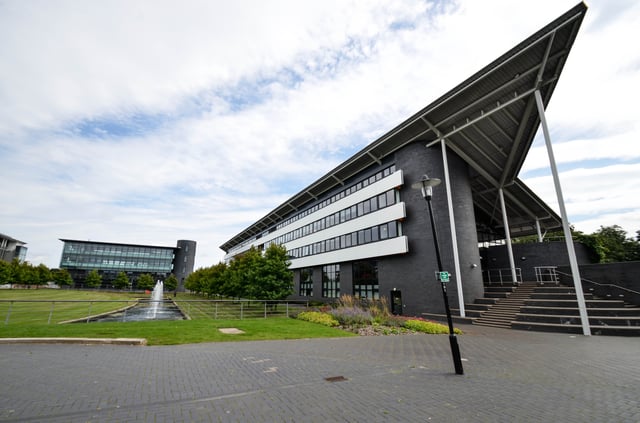
International Digital Laboratory
In 2013/14 Warwick had a total research income of £90.1 million, of which £33.9 million was from Research Councils; £25.9 million was from central government, local authorities and public corporations; £12.7 million was from the European Union; £7.9 million was from UK industry and commerce; £5.2 million was from UK charitable bodies; £4.0 million was from overseas sources; and £0.5 million was from other sources.[2]
In the 2014 UK Research Excellence Framework (REF), Warwick was again ranked 7th overall (as 2008) amongst multi-faculty institutions and was the top-ranked university in the Midlands.[90] Some 87% of the University's academic staff were rated as being in "world-leading" or "internationally excellent" departments with top research ratings of 4* or 3*.[90]
Warwick is particularly strong in the areas of decision sciences research (economics, finance, management, mathematics and statistics). For instance, researchers of the Warwick Business School have won the highest prize of the prestigious European Case Clearing House (ECCH: the equivalent of the Oscars in terms of management research).[91]
Warwick has established a number of stand-alone units to manage and extract commercial value from its research activities. The four most prominent examples of these units are University of Warwick Science Park; Warwick HRI; Warwick Ventures (the technology transfer arm of the University); and WMG.
Commercial focus
Warwick has at times received criticism for being too commercially focused, at the expense of academic creativity and diversity. The most famous proponent of this critique was the noted historian E.P. Thompson, who edited and wrote much of Warwick University Ltd in 1971.[92] The book focuses on the brief student occupation of the Registry in 1967, and its causes, the files that were discovered and published, and the subsequent actions of the university, students and staff.
Nevertheless, with the appointment of Sir Nicholas Scheele as Chancellor in 2002, the university signalled that it intended to continue and expand its commercial activities. In an interview for the BBC, Scheele said: "I think in the future, education and industry need to become even more closely linked than they have been historically. As government funding changes, the replacement could well come through private funding from companies, individuals and grant-giving agencies."[93]
Student life
Undergraduate student life at Warwick can be broadly divided into two phases. In the first year, student life revolves around campus and, in particular, the Students' Union (with its sports clubs, societies, and entertainment facilities). In subsequent years students typically live off-campus, in Leamington Spa, or in either the Coventry suburbs of Earlsdon and Canley or the town of Kenilworth.
Students' Union
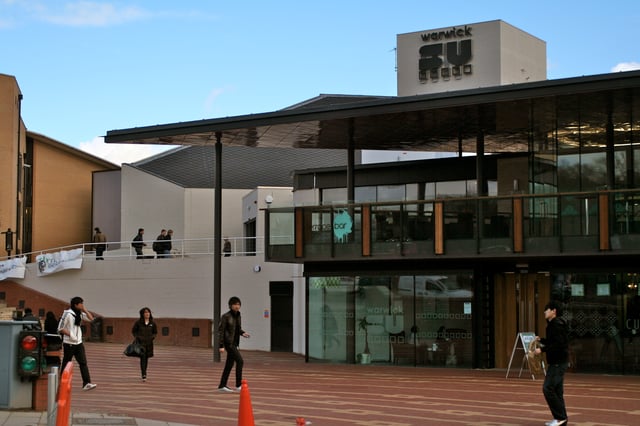
The students' union building – SU South
The University of Warwick Students' Union is one of the largest students' unions in the UK, and currently has over 260 societies and 67 sports clubs including basketball, rowing and ice hockey. The Union has an annual turnover of approximately £6 million, the profit from which is used to provide services to students and to employ its staff and sabbatical officers.
The Union is divided into two buildings—SUHQ (mainly societies and administration and Restaurant Xananas) and The Union Building (entertainment facilities). The Union Building contains a three-room club venue known as "The Copper Rooms"; CAMRA-accredited "The Dirty Duck" pub; a popular bar called "The Terrace Bar"; Curiositea, a tea shop famous for its hot chocolates, cakes and vintage atmosphere; The Graduate, a postgraduate social and study space; and The Bread Oven, a design-your-own sandwich shop.
The Union is a member of the National Union of Students (NUS) and National Postgraduate Committee (NPC).
Student media
Student media at Warwick includes:
Radio Warwick (RAW) – student radio station
The Boar – award-winning newspaper distributed free across campus every second Wednesday[94]
University Challenge
A team from Warwick won BBC television's University Challenge competition for the first time in 2007, beating the title-holders University of Manchester in the final.[95]
Student housing
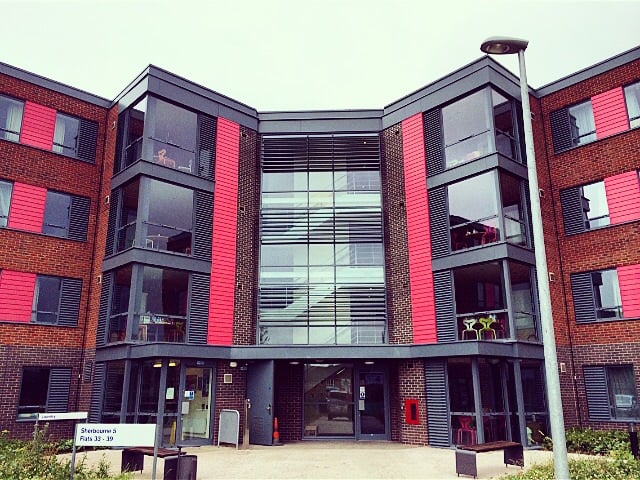
One of the Sherbourne residences
The Warwick campus currently has around 6,300 student bedrooms across a range of undergraduate and postgraduate residences. All of the residences are self-catered, and each has residential tutors and a warden.[96] Warwick guarantees accommodation for all first-year undergraduate students, regardless of their present address. Many of the university's postgraduate population are also catered for, with some specific residences available for postgraduate living. Each residence accommodates a mixture of students both domestic and foreign, male and female, and, sometimes, undergraduate and postgraduate.
In their second and third years, many students live in one of the surrounding towns: either Coventry, Kenilworth or Royal Leamington Spa, where they can live in university-managed accommodation or independently owned residences. The most popular area of residence is the regency town of Royal Leamington Spa, which was included in the Sunday Times' 'Best Places to Live' list.[97]
Since 2011, Warwick has constructed two new halls of residences for the students. Bluebell, opened in 2011, offers accommodation in flats of 8 people, with a total of 505 single rooms for first-year undergraduates. The Sherbourne residences was opened in 2012, which similarly provides 527 ensuite rooms to first-years,[98] and was extended with a further 267 rooms in 2017.[99] Further new residences are under construction to provide over 700 new rooms on campus at the Cryfield village.[100] There is also the Red Queen development in the Tile Hill Suburb, which will house 210 students for 2020/2021 admission, developed by DR2H and Torsion Group.
Rape chat incident
In May 2018, the student news website The Boar reported on the suspension of 11 individuals following an official complaint to the university over screenshots of a group messenger application in which current students proposed sexual assault against other students. The students were initially subject to precautionary suspensions. Following the conclusion of a police investigation which determined no criminal charges should be brought, the University suspended a number of them for 10 years.
Following the media attention the University published a series of letters from the Provost and Vice Chancellor on its website to justify the process.[103]
The Vice Chancellor's letter—which does not mention victims at all—was criticised in a response on The Boar—a student-run news website that first publicised the incident.[104] Later, via the University, he published a follow-up indicating that two of the men whose ban was lifted would not return.[105]
On 28 May 2019 the BBC aired the documentary, 'The Warwick Uni Rape Chat Scandal', about the Rape Chat Incident.[106]
In July 2019 the results of an external review conducted by Dr Sharon Persaud was published.[107] The report found that Warwick University 'had been more concerned with its own reputational interests than in a fair or just assessment of the case', and that a 'legacy of mistrust' had been generated by the Rape Chat Incident.[108] The report concluded that the investigation conducted by the University had 'no common understanding of what the disciplinary process was for, what its philosophy was, how offending conduct was or should be weighed against mitigating features'. Having met with the Investigating Officer and having seen all documentation, Dr Persaud concluded that regarding the investigation, 'there was a profoundly unsatisfactory outcome for almost every single person involved.'[109]
Notable people
Warwick has over 150,000 alumni[110] and an active alumni network.[111] Among the university's alumni, faculty and researchers are two Nobel Laureates, a Fields Medallist, and a Turing Award winner, and there are a significant number of fellows of the British Academy, the Royal Society of Literature, the Royal Academy of Engineering, and the Royal Society.
In science and engineering people associated with Warwick include: Nobel Prize in Chemistry (1975) winner Sir John Cornforth who was a Professor at Warwick, mathematicians Ian Stewart, Sir Christopher Zeeman, David Epstein and Fields Medallist Martin Hairer, computer scientists Mike Cowlishaw and Leslie Valiant, and neurologist Oliver Sacks. In arts and the social sciences: Nobel Laureate Oliver Hart; economist and President of the British Academy Nicholas Stern, Baron Stern of Brentford; academic and Provost of Worcester College Sir Jonathan Bate; academic and journalist Germaine Greer; literary critic Susan Bassnett; historians Sir J.R. Hale and David Arnold; economist Andrew Oswald and economic historian Robert Skidelsky, Baron Skidelsky.
Former Warwick students active in politics and government include Guðni Th. Jóhannesson, President of Iceland; Joseph Ngute, Prime Minister of Cameroon; Yakubu Gowon, former President of Nigeria; Sir Gus O'Donnell, former Cabinet Secretary and head of the British Civil Service; Andrew Haldane, Chief Economist at the Bank of England; David Davis, former Secretary of State for Exiting the European Union and former Shadow Home Secretary; Baroness Valerie Amos, the eighth UN Under-Secretary-General for Humanitarian Affairs and Emergency Relief Coordinator and former Leader of the House of Lords; Mahmoud Mohieldin the Senior Vice President of the World Bank Group; Bob Kerslake, former Head of the Home Civil Service; and Kim Howells, former Foreign Office Minister.
Warwick graduates are active in business. In the automotive industry, this includes Linda Jackson, CEO of Citroën; Andy Palmer, CEO of Aston Martin; Ralf Speth, CEO of Jaguar Land Rover. Others include Bernardo Hees, CEO of the Heinz Company & former CEO of Burger King; Nigel Wilson, CEO of Legal and General; and Ian Gorham, CEO of Hargreaves Lansdown.
Notable Warwick alumni in media, entertainment and the arts include Emmy and BAFTA Award–winning Stephen Merchant, best known for being the co-writer and co-director of the sitcoms The Office and Extras; Oscar-nominated screenwriter Tony Roche, known for co-writing and co-producing Veep and The Thick of It; Olivier Award–winning director and writer Dominic Cooke, who is also Artistic Director at the Royal Court Theatre; actress Ruth Jones; comedian and actor Frank Skinner; Guardian columnist Dawn Foster; blacksmith turned comedian and comedy writer Lloyd Langford; actor Adam Buxton; science fiction and fantasy author Jonathan Green; actor Julian Rhind-Tutt; Olivier Award–winning actor, Alex Jennings; author Anne Fine; author A.L. Kennedy; Tony Wheeler, creator of the Lonely Planet travel guides; Camila Batmanghelidjh; Merfyn Jones, governor of the BBC; and Grammy– and Emmy Award–winning musician Sting.
